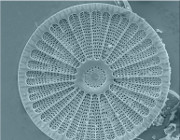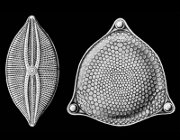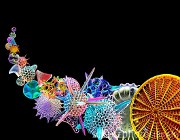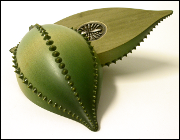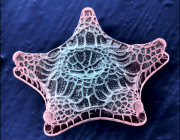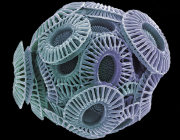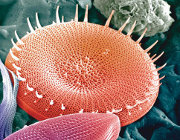Home :: List of Publicly Available Datasets :: Corethron pennatum L29A3
Corethron pennatum L29A3
Downloads:
| Principle Investigator(s) | Bank Beszteri |
|---|---|
| External sample ID | C. pennatum CTR 1 |
| NCGR Sample ID | MMETSP0169 |
| Sample accession number | CAM_SMPL_002448 |
| Assembly accession number | CAM_ASM_000266 |
| Combined Assembly Name | Corethron-pennatum-L29A3 |
| Genus | Corethron |
| Species | pennatum |
| Strain | L29A3 |
| Clonal | Yes |
| Axenic | No |
| Prelim. NCBI Taxon ID | 218684 |
| 18S rRNA | |
| Importance of organism and transcriptomes | Mass sexual events of C. pennatum thus play an important role for the silicon cycle and can explain monospecific layers of this species in Southern Ocean sediments (Leventer et al. 2002). |
| Additional citations and references | |
| Environmental Data | |
| Primary citation for organism's characterization, if available | (Grunow) Ostenfeld in Van Heurck 1909: 30, pl. 6: fig. 88 |
| Latitude | -47.33333 |
| Longitude | -15.65 |
| Collection date | 18-JAN-09 |
| Sample collection site | Southern_Ocean |
| Other collection site info | LOHAFEX station 160 |
| Sample material (e.g. "seawater," "sediment," etc.) | seawater |
| ENVO term for habitat - primary term | Acquatic: marine |
| Other environmental metadata available | further metadata available at http://www.pangaea.de |
| Other environmental metadata available | further metadata available at http://www.pangaea.de |
| Habitat | marine habitat |
| Experimental Data | |
| Date of experiment | 24-JUN-11 |
| Growth medium | modified f/2 amended seawater |
| Modifications to growth medium | Using trace metal solution after Morel et al. 1979. medium set up using trace metal clean conditions and procedures. |
| Temperature (ºC) | 3 |
| Salinty (psu) | 33.6 |
| pH | 8.15 |
| Light (µmol photons / m2 / sec) | 35 |
| Day portion of day:night cycle in hours | 16 |
| Night portion of day:night cycle in hours | 8 |
| Nitrate (μmol/L) | 28 |
| Ammonium (μmol/L) | .09 |
| Phosphate (μmol/L) | 28.45 |
| Silicate (μmol/L) | 60 |
| Total Fe (nmol/L) | 11000 |
| Trace elements (total) (nmol/L) | 7.3 |
| Investigation type | Eukaryotes |

